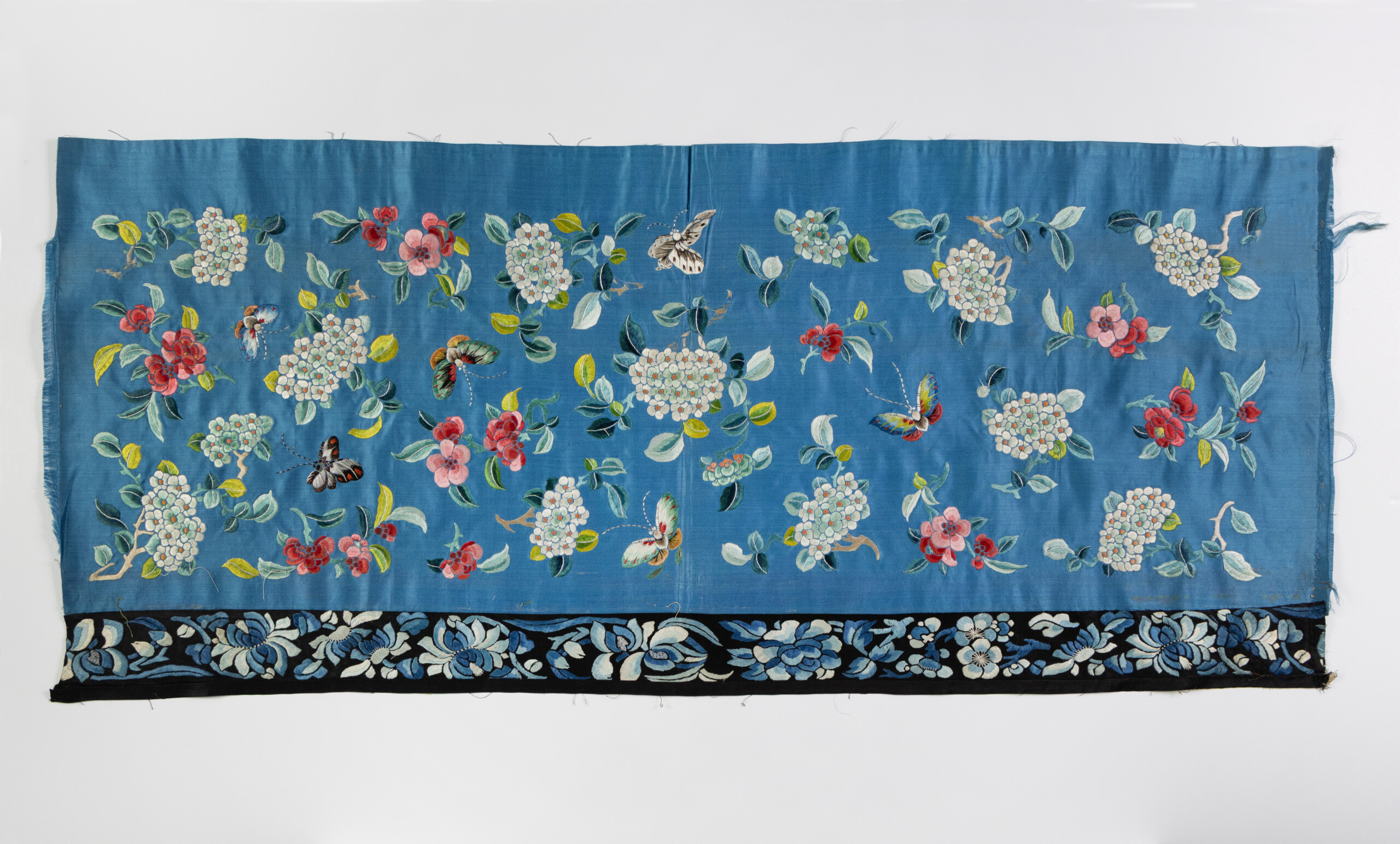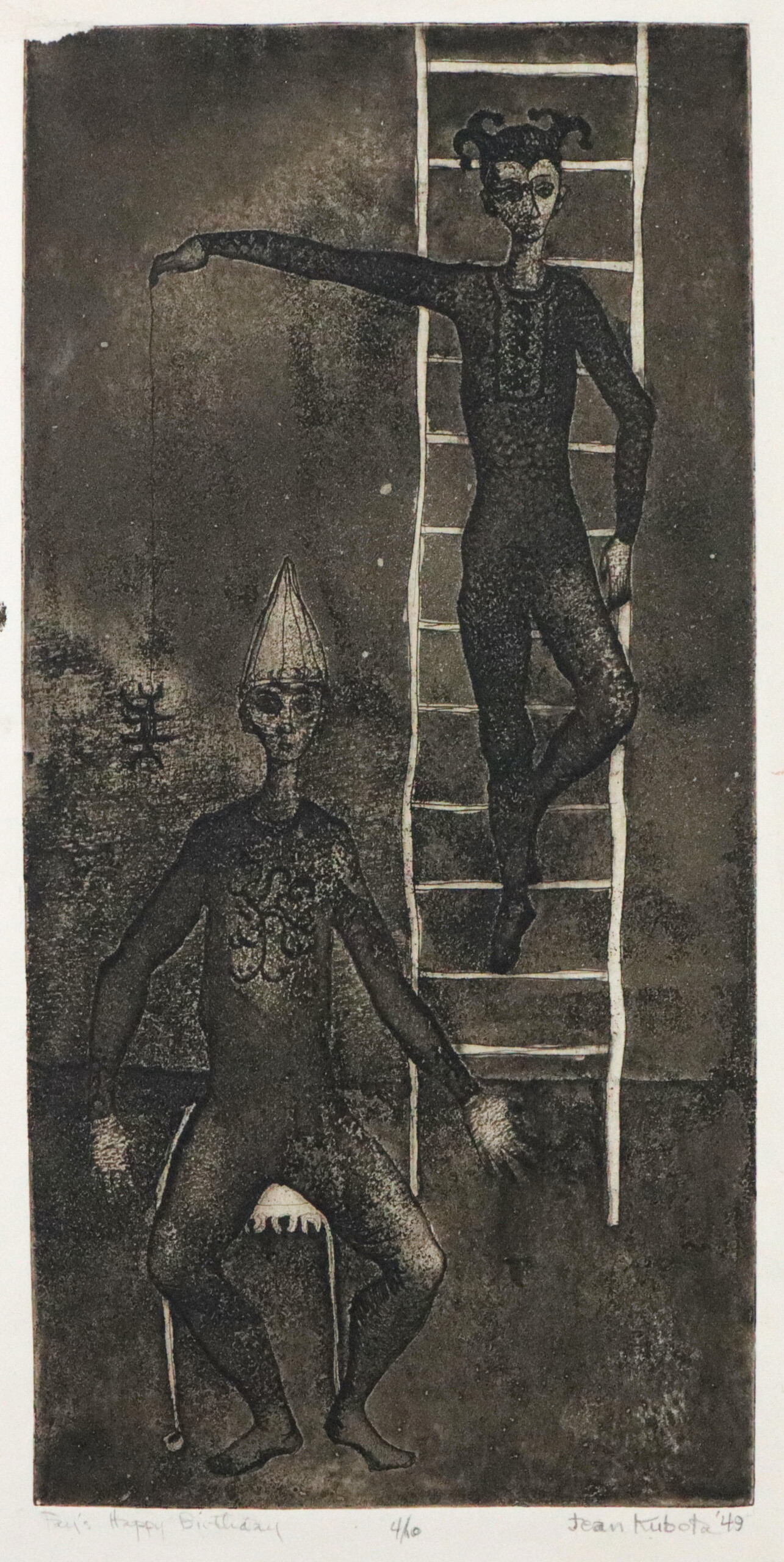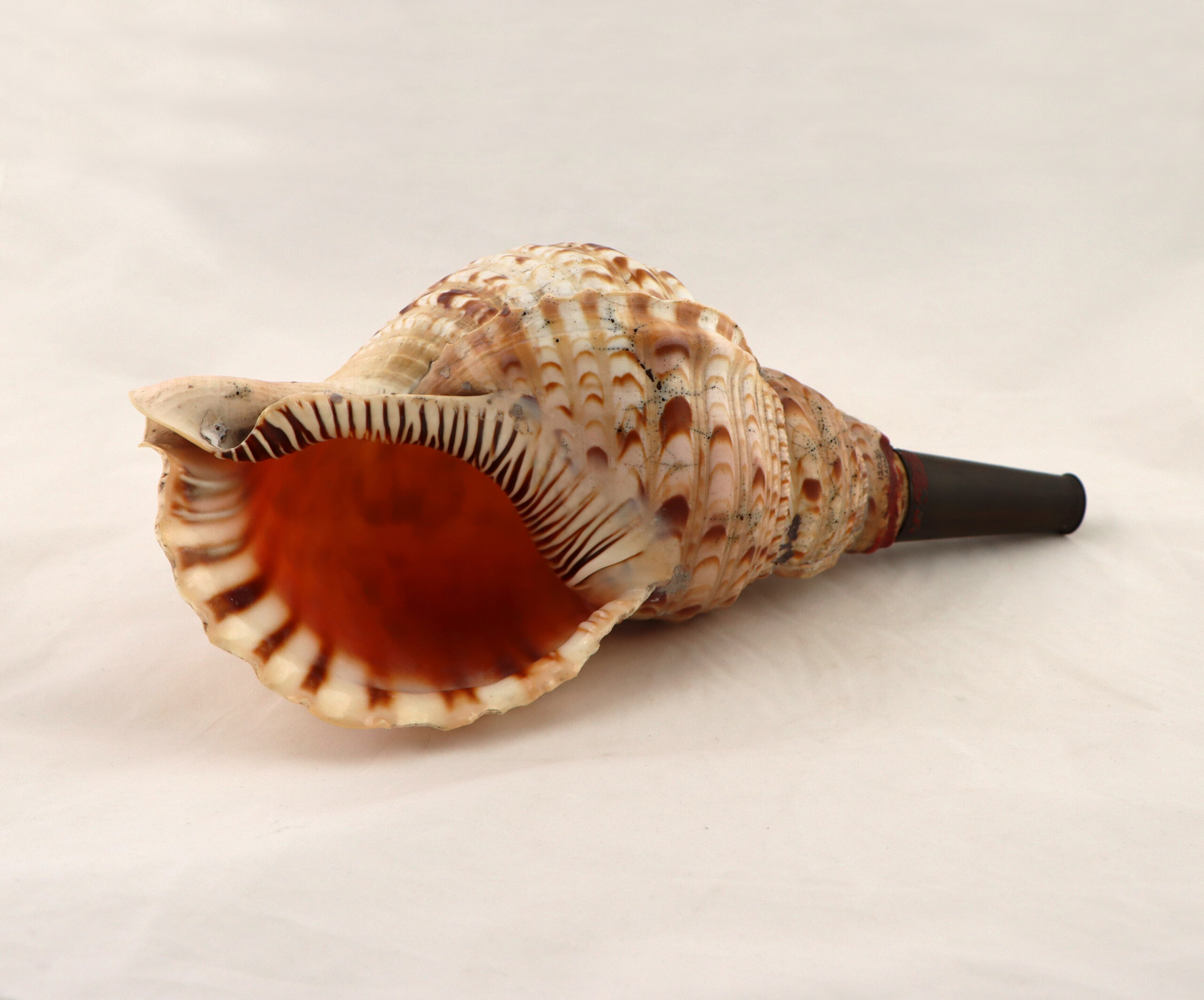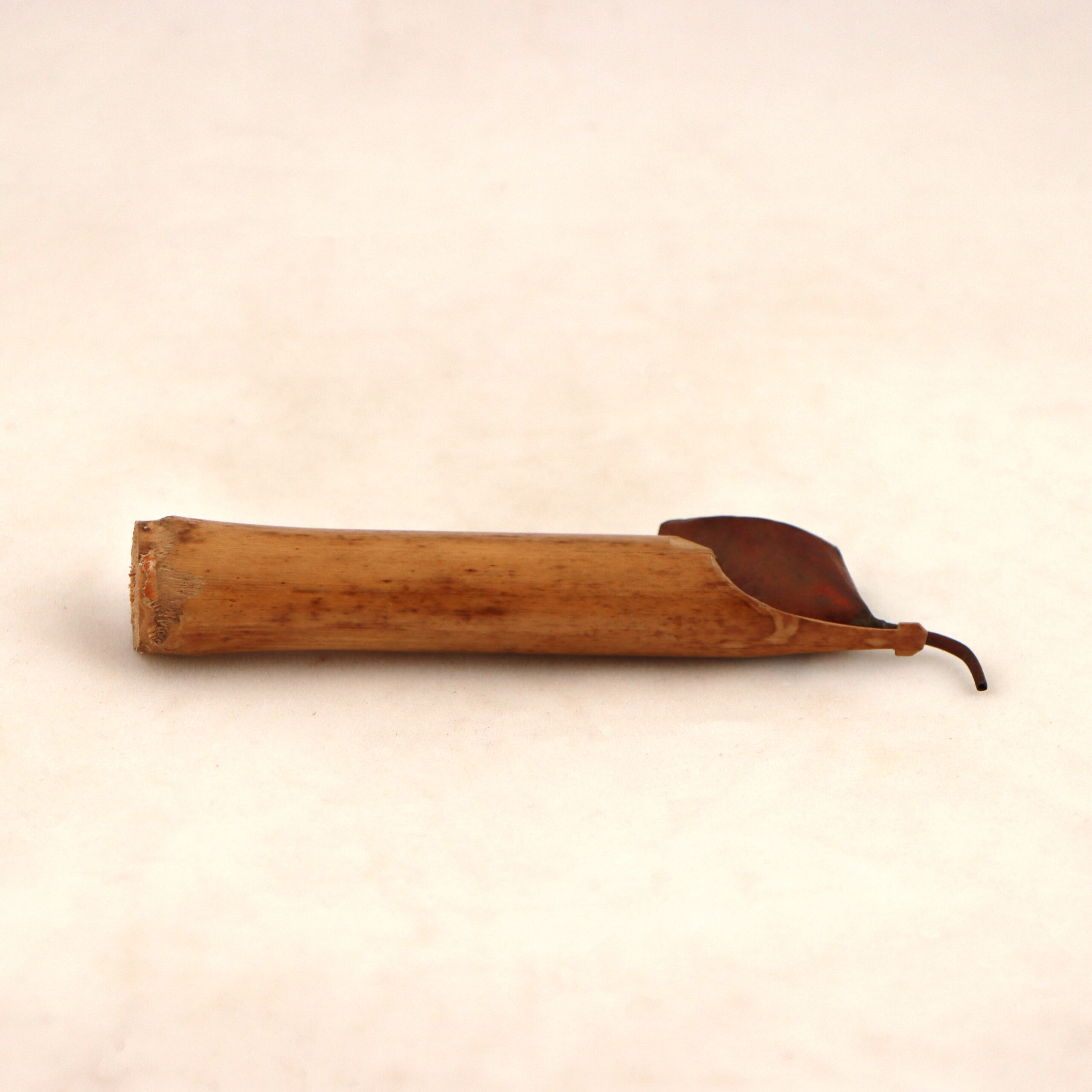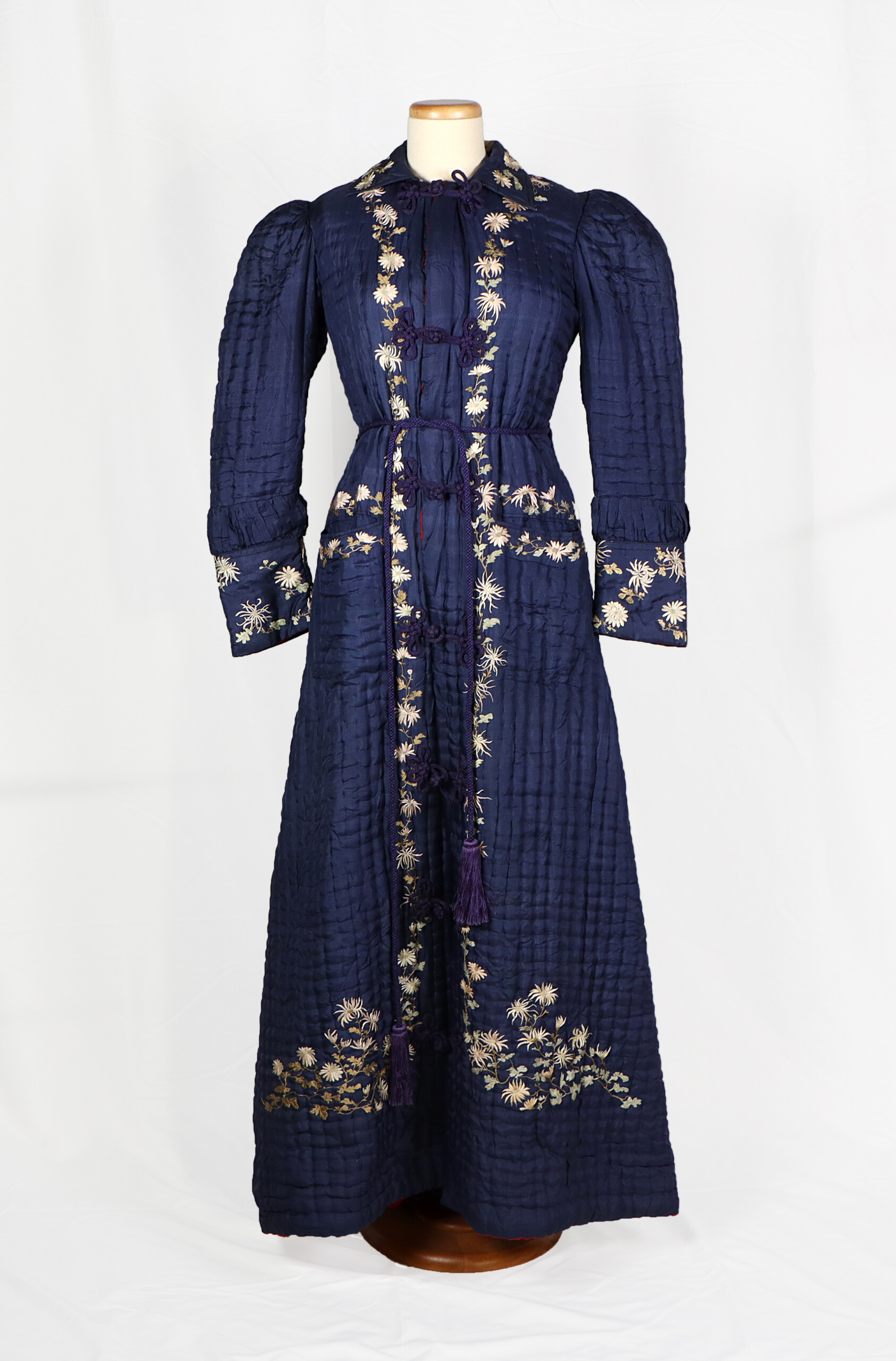Fluid shapes, vibrant colors, and the usage of silk for this piece create a beautiful floral scene with butterflies and blossoms. The butterflies vary in color, with one appearing in all the shades of the rainbow, and another appearing in simple whites, blacks, and reds. Flowers appear in blue and pink, highlighted by green and [...]
Seated Boy With Fish
Kelsey Malone2025-11-16T15:15:36-05:00Gosho ningyo (palace dolls) originated in the Kyoto Imperial Palace during the Edo period in Japan (1603-1868) and were cherished for their childlike qualities. These dolls represented boys up to six years old and were designed for adults rather than for children’s play, their fragility serving as clear evidence of this purpose. The dolls [...]
Ma ṇi lag skor (Handheld Prayer Wheel)
Kelsey Malone2025-11-12T11:05:37-05:00A common meditative ritual in Tibetan Buddhism is to recite a mantra, or prayer, to a certain deity. Tibetan Buddhists believe that by reciting the mantra, they are purifying their spirit of negative energies and generating good merit, or good karma. Prayer wheels can be found in and near Tibetan Buddhist temples today and range [...]
Fay’s Happy Birthday
Kelsey Malone2024-01-03T16:40:38-05:00Jean Kubota Cassill is a printmaker who worked primarily in the mid- to late twentieth century. printmaking. She studied printmaking at the University of Wisconsin-Madison where she encountered Arthur Frick, a professor of drawing. It is unknown as to how or why he received this artwork, but it may be that Cassill was a student [...]
Horagai (Conch Shell Trumpet)
Kelsey Malone2024-01-03T16:30:54-05:00Conch shell trumpets have been present in Japanese history since the Nara Period (710-794 CE). The horagai, the name given to the traditional instrument, is a culturally significant musical tool in Japan because of its pitch frequency, unique shape, symbolism, and use in religious practices. The instrument's primary material, the shell, is from the Chronia [...]
Tjanting
Kelsey Malone2024-01-03T15:27:49-05:00A tjanting is a tool used in making tulis batiks, traditional Javanese fabrics patterned with wax. The tjanting holds hot, liquid wax in the copper wax reservoir. When placed in the dye, the waxed area remains the color of the fabric. Tjantings have a variety of tips, sizes, and number of spouts to pattern the [...]
Dressing Gown
Kelsey Malone2024-01-03T15:16:02-05:00This quilted Japanese dressing gown is made of blue and red silk with a wool inner layer. The hems, plackets, back belt loop, and pockets are embroidered with flowers. This degree of detail would have made the garment quite expensive, although the mechanization of silk production in the latter half of the century made silk [...]
Spade Money
Berea College2016-07-27T14:32:32-04:00Chinese spade money is an interesting look at how important agriculture was to the kingdoms that minted this currency. Spade money evolved from weeding tools used during the Zhou Dynasty, and early types included a hollow area for a handle. Eventually the hollow areas became flat and easy to stack. Different states minted their own [...]
Knife Money
Berea College2016-07-27T14:30:43-04:00Knife money evolved in China along with spade money during the Warring States period of the Zhou Dynasty. There is no consensus on the origin of knife money, but there are a few legends. In one of the stories a prince who was running low on money to pay his troops allowed them to use [...]
Shiva Nataraja
Berea College2016-07-20T20:36:01-04:00In this icon, Shiva is performing the tandava, in which he is shown destroying the old universe and dancing a new one into creation. In his hands he holds fire to destroy the universe and a hand drum whose sound creates the universe. His lower right hand makes the abhayamudra, the gesture which removes fear, [...]

